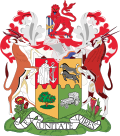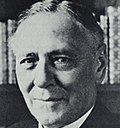| Chief Justice of South Africa | |
|---|---|
List
| |
 | |
| Style | The Honourable |
| Nominator | Judicial Service Commission |
| Appointer | President of South Africa |
| Term length | 12 years |
| Inaugural holder | Lord de Villiers |
| Formation | 1910 |
| Deputy | Deputy Chief Justice of South Africa |
| Website | Office of the Chief Justice |
The chief justice of South Africa [1] is the most senior judge of the Constitutional Court and head of the judiciary of South Africa, who exercises final authority over the functioning and management of all the courts.
Contents
- History and creation of the post
- Chief Justice in a new era
- Chief justices of Cape Colony
- Chief justices of Natal (1856–1910)
- Chief justices of Orange Free State (1875–1919)
- Chief justices of Transvaal (1877-1910)
- Chief justices of South Africa (1910 - present)
- See also
- References
- External links
The position of chief justice was created upon the formation of the Union of South Africa in 1910, with the chief justice of the Cape Colony, Sir (John) Henry de Villiers (later created The 1st Baron de Villiers), being appointed the first chief justice of the newly created Appellate Division of the Supreme Court of South Africa.
Until 1961, the chief justice held a dormant commission as Officer Administering the Government, meaning that if the governor-general died or was incapacitated the chief justice would exercise the powers and duties of the governor-general. This commission was invoked in 1943 under Nicolaas Jacobus de Wet, and in 1959 and 1961 under Lucas Cornelius Steyn.

















